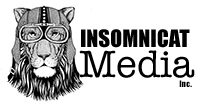Content For Every Stage of The Funnel
The basic concept behind the beloved content marketing funnel revolves around the goal of a transaction or money-making interaction with your company. You want to use content to create a chain of events for prospects. The funnel will take those who are completely unaware of your company and turn them into loyal and returning customers. You’ll see purchase likelihood increase as you head toward the neck —if executed correctly.

Top of the Funnel
Learning, discovery, attention, awareness, traffic generating, etc.
The top portion of this funnel is for raising awareness and getting your brand out in front of people who have never heard of you. Consider this your prospect generating stage.
Middle of the Funnel
Research, discussion, consideration, lead generation, etc.
The middle of the funnel is where you interact with these prospects more intimately and build your audience. You begin to offer educational materials and cause them to evaluate decisions. You have a solution to whatever problem they experience and you’re going to give them ample resources to prove it. Consider this your lead-generating stage.
Bottom of the Funnel
Conversion, transaction, purchase, acquire, etc.
The bottom of the funnel is where the hard work starts to pay off for your company. Until now, it’s been difficult to track your progress because you’ve been dealing in KPIs that don’t really tell the story and provide ultimate success of your campaign. This is where you create content to encourage a purchase so you’ll show products in action, conduct educational and technical webinars, or offer spec sheets for comparisons of products. Consider this your conversion stage. Give the user what he or she needs to decide your company or product is a good solution.
What it Means
When you break the funnel down into content goals, you can consider that the larger part of the funnel is about creating content that is educational, even selfless. This non-branded content generated at this part of the funnel initiates a relationship between your company and a reader (potential customer). You’re giving out information while asking for nothing in return. This content will address frequently asked questions, news, market trends, and even overall service costs in the industry. It’s content that people want to read and content that people are searching for. It’s the indirect interaction that raises brand awareness.
Imagine a user has been reading content on your site’s blog and watching your videos for a while, maybe even following you socially. Now it’s time to ramp up the content types and get more direct. This is where you need content that indicates he or she may have a problem or a need addressed and you have the solution. This is the progression through the funnel. This is where we see a need for how-to articles, demo videos, and more information about your brand, products, or services.
Once the potential buyer has begun to understand your product or service and has continued to interact with you, you may want to engage with them in a more direct way. We are nearing the neck of the funnel now. This is where purposeful content comes in handy. This is where the conversion happens and the prospect becomes an actual customer. You’ll want content that’s geared toward that persona. Some other content types that will be useful at this stage include product descriptions, free trials, and demos.
Beyond the Neck of the Funnel
Once you’ve got a conversion, you’ll want to turn that person into a repeat customer. It’s important to think about life after the funnel and nurture those who have taken the chance on your company and product. In reality, you’ll want to nurture those folks every step of the way, but it’s important not to disregard them once they’ve converted. And to do that, you’ll need more … content.


Leave a comment